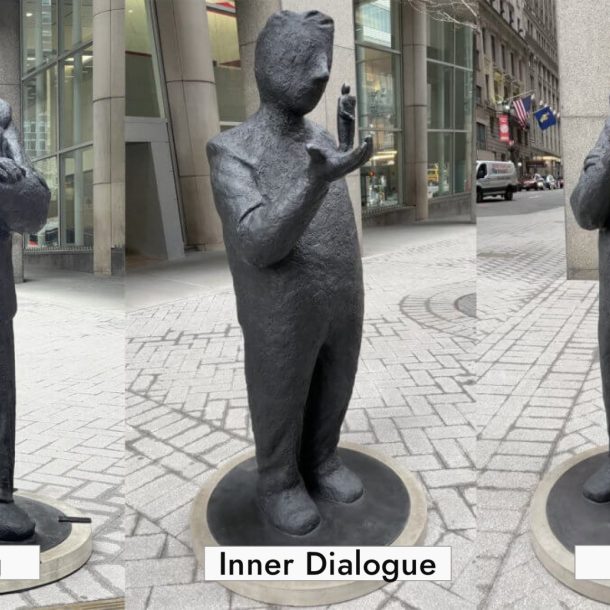Categories
- Case Study (4)
- Coaching (6)
- Direction (1)
- Entrepreneur (1)
- Experience Innovation (8)
- Leadership (9)
- Leadership (14)
- Strategy Consulting (8)
Recent Posts
As an executive coach and business advisor, I’ve seen a lot of different leadership styles. While we help leaders understand their strengths and build their skills, there are some common skills you can work on today that will help you take your leadership to the next level.
Understand emotions to gain influence
I work with executives and leaders in a variety of industries. One of the biggest frustrations I consistently hear from these leaders is not having the influence or desired effect on individuals or an outcome. Emotions are often the culprit.
Emotions can run high due to a variety of feelings, such as feeling like we’re not being heard or respected. When emotions run high, our judgment is skewed and we risk reacting in ways that further escalate tension.
We are human. We feel and sometimes those feelings influence our actions in unintended ways. Emotions cloud thinking and, as a result, prevent us from asking clarifying questions—questions that could change the trajectory of the discussion.
So, what can we do when our emotions run high? One simple step is to begin by asking “What are the positive intentions behind the individual’s words or actions?” Start the conversation by recognizing those good intentions. Then ask questions that will further clarify the reason behind their actions. Questions such as “could you help me understand by walking me through your thought process?” can go a long way in helping us understand the why behind actions that may seem incomprehensible.
Lack of emotion or connection can also hinder your influence. We work best with who we know and trust. If your people don’t feel like you care about them or are invested in them, they may not fully buy into your vision. Your influence loses power.
In these moments we need to step back, reflect, understand what is behind the emotion we or others are experiencing. Then we should ask ourselves what we need to know to better understand—what can we ask to bring more clarity or humanity to the situation?
Ask the right questions
In his book “Questions are the Answer: A Breakthrough Approach to Your Most Vexing Problems at Work and in Life,” Hal Gregersen interviewed 200 creative and successful business leaders. All of the leaders were exceptional at landing on their feet and asking the questions that other people weren’t. He notes, “the biggest questions we ask often demand the biggest level of uncertainty, and fear, and anxiety that we can imagine.”
What if you could unlock a better answer to your most vexing problem just by changing the question?
Our brains crave certainty and clarity, and most professional environments value delivering answers and short-term progress greater than bigger questions with a lot of uncertainty. To break out of mental ruts, embrace the uncomfortable process of letting the questions lead us.
Peter Drucker, known as the father of management thinking, grasped this truth when warning that the “important and difficult job is never to find the right answers, it is to find the right question. For there are few things as useless, if not dangerous, as the right answer to the wrong question” He would jump-start strategic thinking by asking: “What changes have recently happened that don’t fit ‘what everyone knows’?”
Think beyond how you’ve always done things. Are there new opportunities you’re missing? What experiments could be worth the risk? Think in questions, not answers.
Listen with intention
Listening is just as important as asking questions. The key is to listen to the content and the emotions behind what is being said. When someone is walking you through their thought process, identify when they seem excited, frustrated, or uncertain. Explore those areas a little further. “It sounds like you had some questions at that time, what were you trying to evaluate or weigh?” Try periodically reframing what you heard to clarify your understanding. It helps you better understand the perspective of the person you’re talking with and lets them know that you’re truly listening and interested in learning. It may seem simple, but authentic listening involves putting aside judgment or intent, especially when emotions are running high. The goal is to be curious and seek enlightenment.
Make others feel seen
As you better understand the perspectives of your team or others around you, don’t forget to recognize them. Let them know you see them hard at work. Recognize their contributions and victories. Speak to their values. Making them feel seen is encouraging and helpful in the long run.
Celebrating victories or recognizing contributions is about more than making people feel good. A positive and healthy team culture is important for continued success, it also helps your team buy in and focus on not only their accomplishments but the team’s as well.
Asking clarifying questions and listening to your team’s needs only helps in this work. You’ll better understand what your people need and value. You’ll know how to recognize them in a way that works for them and will inspire them to keep going. Show that you care. You can’t be a good leader without doing so.
Tap Intelligence to find good ideas
Executives must be comfortable with tapping the intelligence around them. Engage and ask questions of your employees, advisors, investors, board members, and fellow executives. The ability to both listen and make connections while engaging with others is a skill that takes time, intention, and practice. Ultimately, it leads to more meaningful and productive exchanges. Often, the best ideas or information comes from your team, the people doing the work day in and day out. By tapping the intelligence of others and asking more questions, you’ll find more and more ideas that can help you grow. Being a good leader means you can recognize and lift up good ideas.
Create a shared vision
You’ve asked questions. You’ve listened. You’re hearing new ideas and generating your own. Now it’s time to ensure others understand your vision and feel like they’re a part of it.
A good leader can clearly articulate their vision and how they hope to get there. Advocate for it. Enlist others to join and add their perspective. Essentially, you’re creating a movement. If someone believes they’ve helped create this vision, they’ll be invested in achieving it.
You cannot command others to follow, you have to inspire. By asking questions and listening to your team’s needs, you not only show you care, you can also gather important information on how to speak to their needs and values. Get to know your people and speak their language. You’ll make them feel seen and inspire them to share in your vision.
Motivate through change
Change is hard. But it’s a key component of staying competitive and recognizing your customer’s needs. With change comes some risk; things don’t always go according to plan. This is as natural as the air we breathe.
As you navigate change of any kind, recognize there will be fear. Do your best to explain the why behind the change and to approach fear with curiosity and understanding. Listen with intention and approach change as a chance for everyone to learn. Failure and success are both great learning opportunities.
It also helps to shrink the change. Instead of unleashing a tidal wave of changes, focus on small things bit by bit. The more you learn and encourage people through the small changes, the easier it is for them to stay focused and resilient. And when you add up those little victories, they create a lot of success and confidence.
Be your example
Be the change you want to see in the world. It’s an old saying, but it still rings true. Walk the walk. Do what you say. Follow up on promises. This builds trust and credibility.
You can’t just earn a title and say you’re a leader. You have to earn it.
Want to learn more about how to ask good questions or how to be a better leader? Contact us to start a conversation…ask your questions 😉
Join our mailing list
Copyright © 2021 ArtScience Group. All rights reserved.







